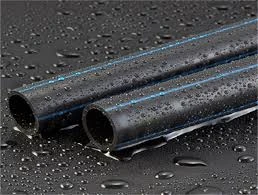Nov . 22, 2024 01:57 Back to list
hdpe pipe fittings
Understanding HDPE Pipe Fittings A Comprehensive Guide
High-Density Polyethylene (HDPE) pipe fittings have gained significant attention in various industries due to their superior durability, flexibility, and corrosion resistance. These fittings play a crucial role in the installation of HDPE piping systems, which are widely used for water distribution, drainage, and industrial applications. This article aims to explore the features, benefits, and installation practices associated with HDPE pipe fittings.
What is HDPE?
HDPE, or High-Density Polyethylene, is a thermoplastic polymer made from petroleum. Its high molecular density gives it exceptional physical properties, making it an ideal material for pipe production. HDPE pipes are known for their high strength-to-density ratio, allowing them to withstand harsh environmental conditions. This makes them a popular choice for both residential and commercial pipeline systems.
Types of HDPE Pipe Fittings
HDPE pipe fittings come in various shapes and sizes, designed to connect different sections of HDPE pipes. The common types include
1. Elbow Fittings Used to change the direction of the pipe flow, typically available in 90-degree and 45-degree angles.
2. Tees These fittings allow for the branching of pipe systems. They can connect two pipes at a 90-degree angle while having a third section for continuation.
3. Couplings Couplings are used to connect two sections of pipe, ensuring a tight seal for leak-free joints.
4. Adapters These fittings allow for connections between HDPE pipes and other materials, such as metal pipes, ensuring compatibility across different pipe systems.
5. End Caps Used to seal the ends of pipes, end caps are essential in preventing debris or contaminants from entering an open pipe end.
Benefits of HDPE Pipe Fittings
1. Corrosion Resistance Unlike metal fittings, HDPE pipe fittings do not rust or corrode, significantly extending the lifespan of the piping system.
hdpe pipe fittings

2. Flexibility and Durability HDPE fittings are flexible, allowing for ease of installation in challenging environments, such as those requiring bending or maneuvering around obstacles. They are also tough enough to withstand harsh weather conditions.
3. Chemical Resistance HDPE fittings resist a wide range of chemicals, making them suitable for industrial applications where exposure to corrosive substances is common.
4. Lightweight HDPE fittings are considerably lighter than their metal counterparts, reducing shipping and handling costs while simplifying the installation process.
5. Environmental Impact Being recyclable and non-toxic, HDPE fittings contribute to a sustainable solution for modern pipeline systems.
Installation Considerations
Proper installation is critical to maintaining the integrity and longevity of HDPE piping systems. Here are some key considerations
- Preparation Before installing HDPE pipe fittings, ensure that the pipes are clean and free from debris. Proper cleaning helps achieve better fusion joints.
- Fusion Welding The most common method for joining HDPE fittings is through fusion welding, which involves heating the ends of the pipes and fittings until they melt together. This creates a seamless and durable bond.
- Alignment and Support Ensure that pipes are properly aligned during installation to avoid stress on the joints. Support the piping system adequately to prevent sagging or bends that could compromise flow.
- Testing After installation, conduct pressure tests to check for leaks and validate that the system is functioning as expected before putting it into service.
Conclusion
HDPE pipe fittings are an integral part of modern piping systems, offering a reliable, durable, and environmentally friendly solution to both industrial and residential needs. With a broad range of fittings available and the advantages they offer, HDPE piping continues to be a preferred choice for engineers and contractors worldwide. Understanding the specifications, benefits, and installation practices of HDPE pipe fittings ensures that users can maximize the effectiveness and longevity of their piping systems, ultimately leading to enhanced operational efficiency and reduced costs.
-
Premium CPVC Sheet: High-Temp & Chemical Resistant Solutions
NewsAug.15,2025
-
Durable PPR Pipe for Hot & Cold Water Systems - Easy Install
NewsAug.14,2025
-
Durable HDPE Sheet | Versatile & Impact-Resistant Plastic
NewsAug.13,2025
-
Premium PVC Soft Sheets: Clear, Flexible & Durable
NewsAug.12,2025
-
Premium PVC Round Rods: Durable, Chemical Resistant, Easy to Machine
NewsAug.11,2025
-
PP U-channel: Chemical-Resistant, Lightweight & Durable
NewsAug.10,2025

